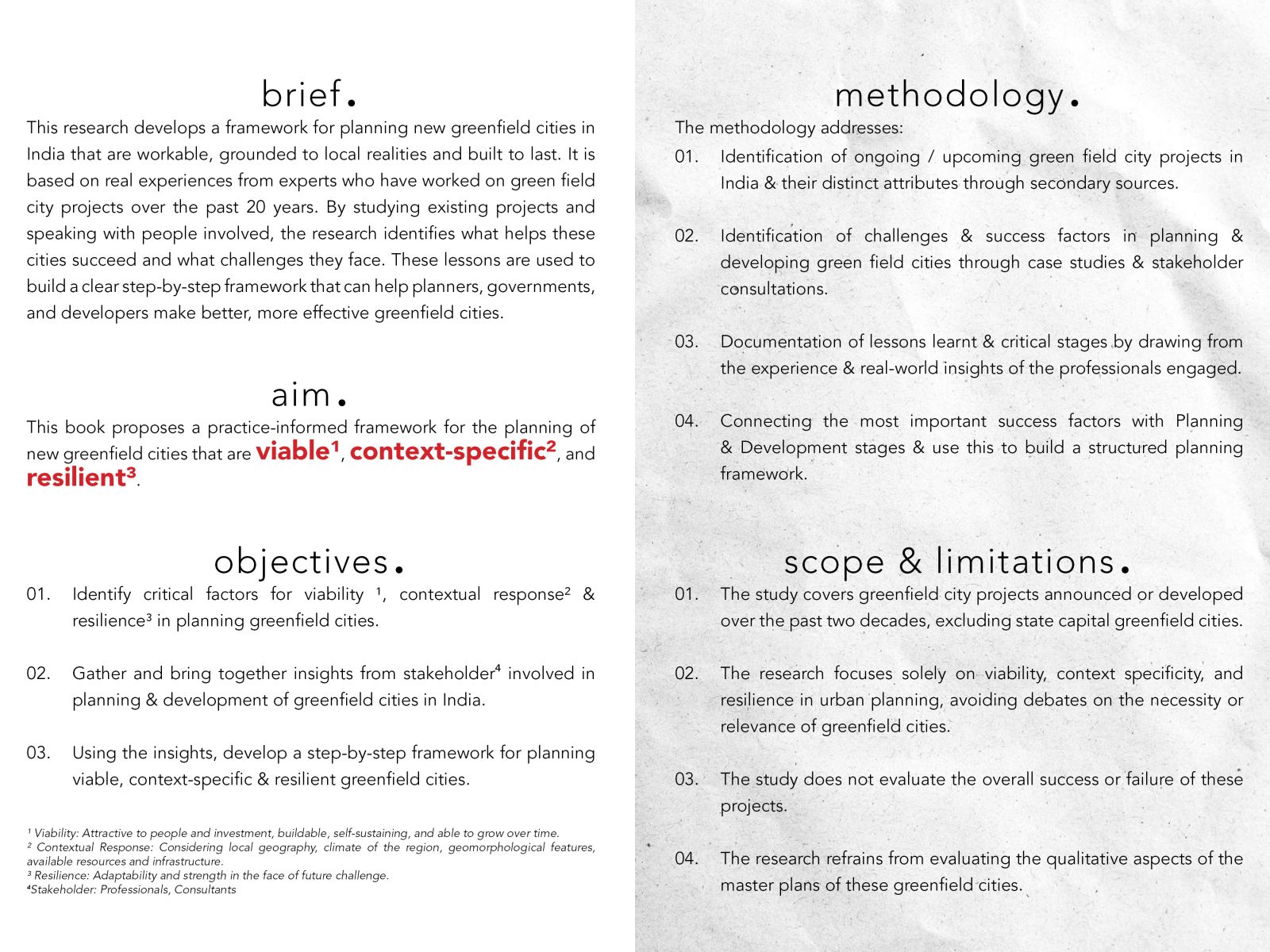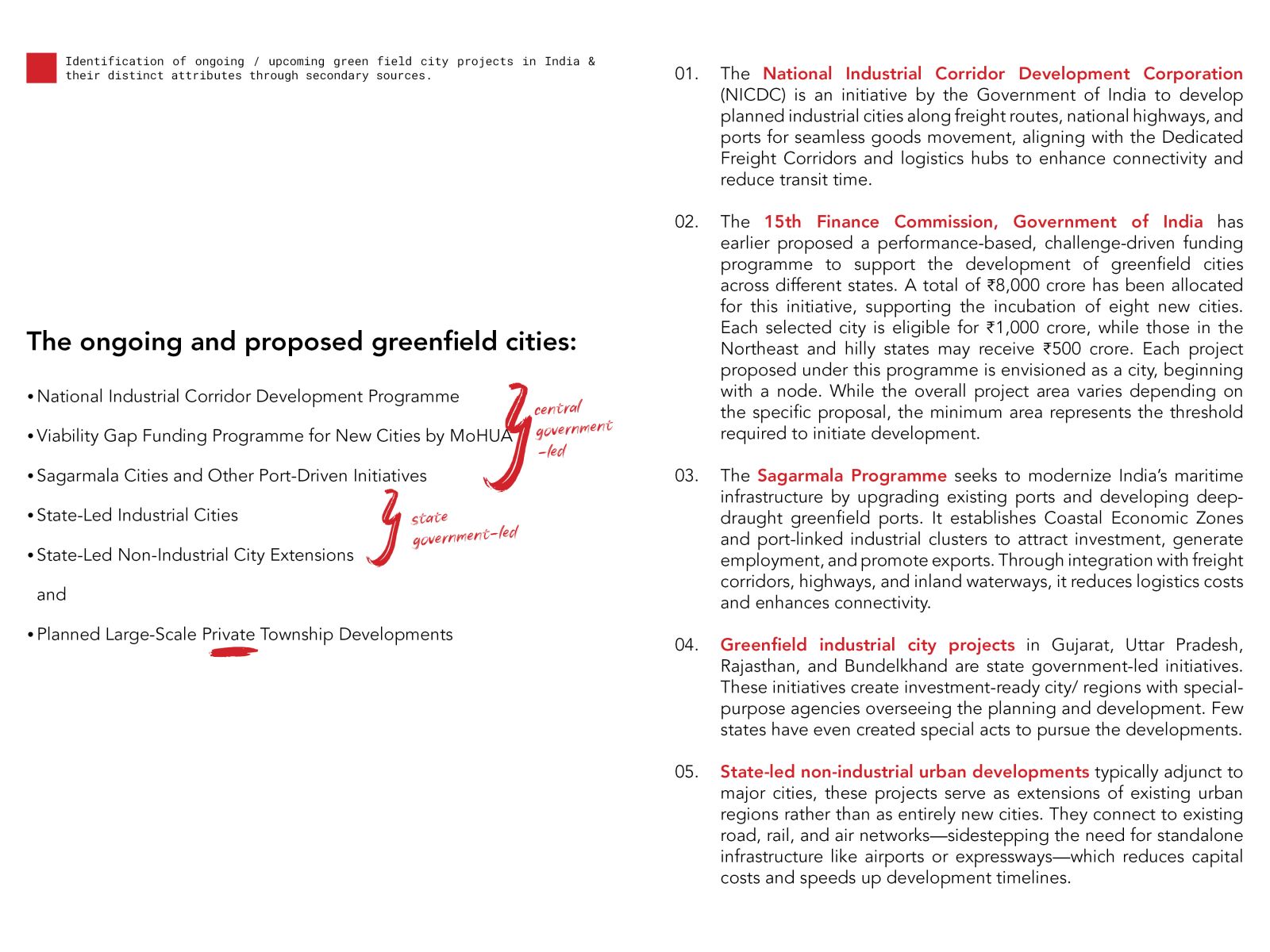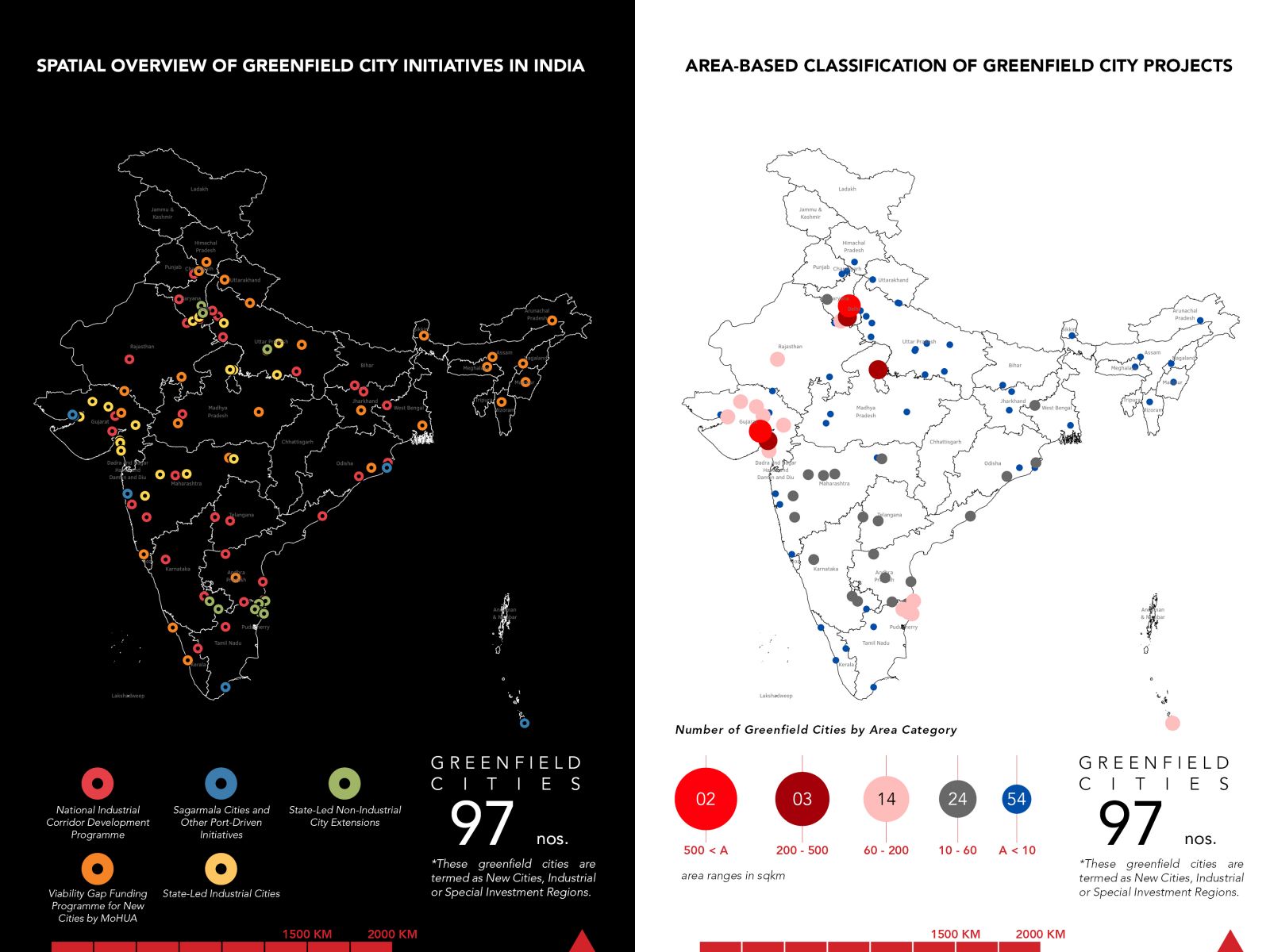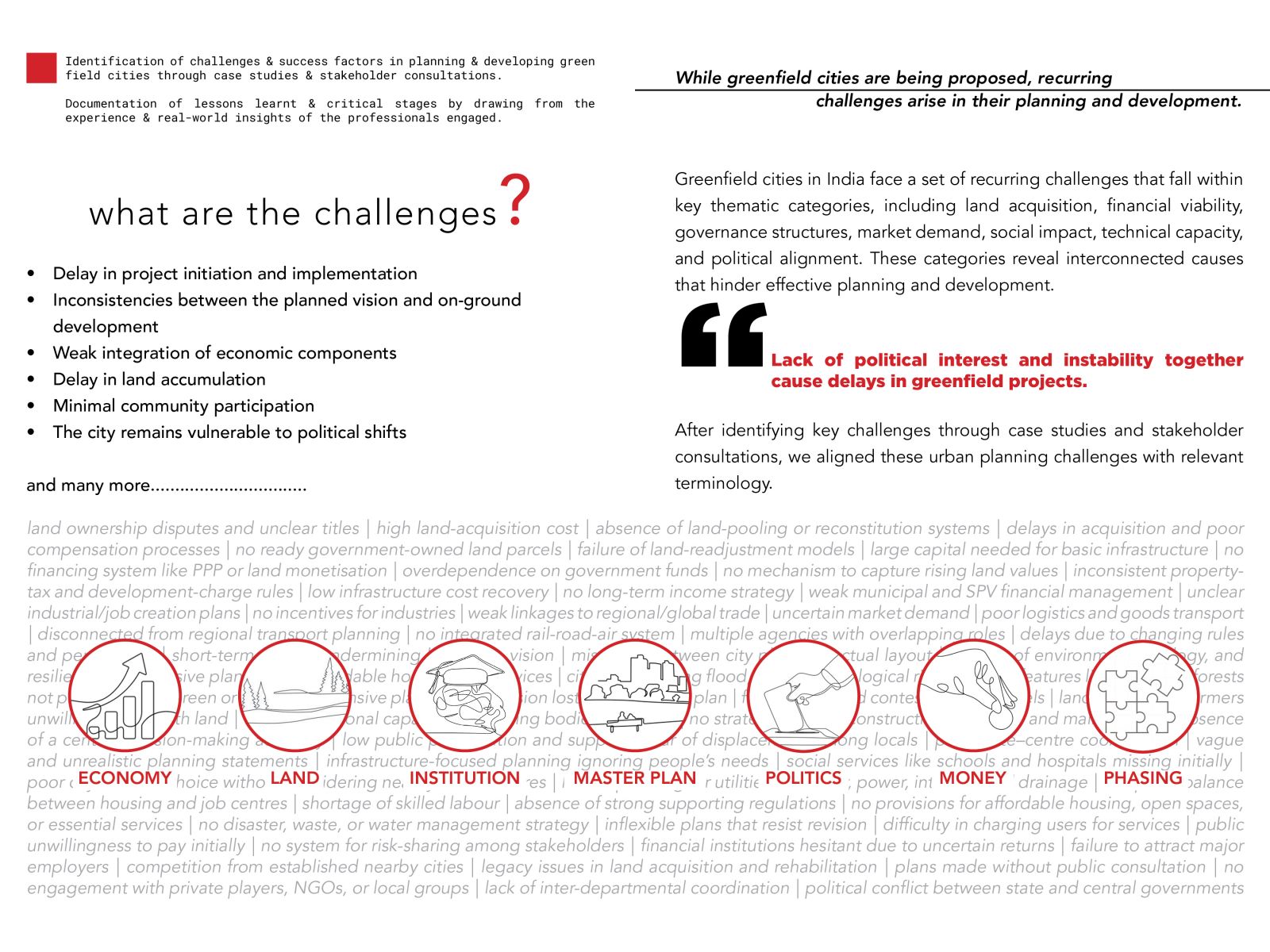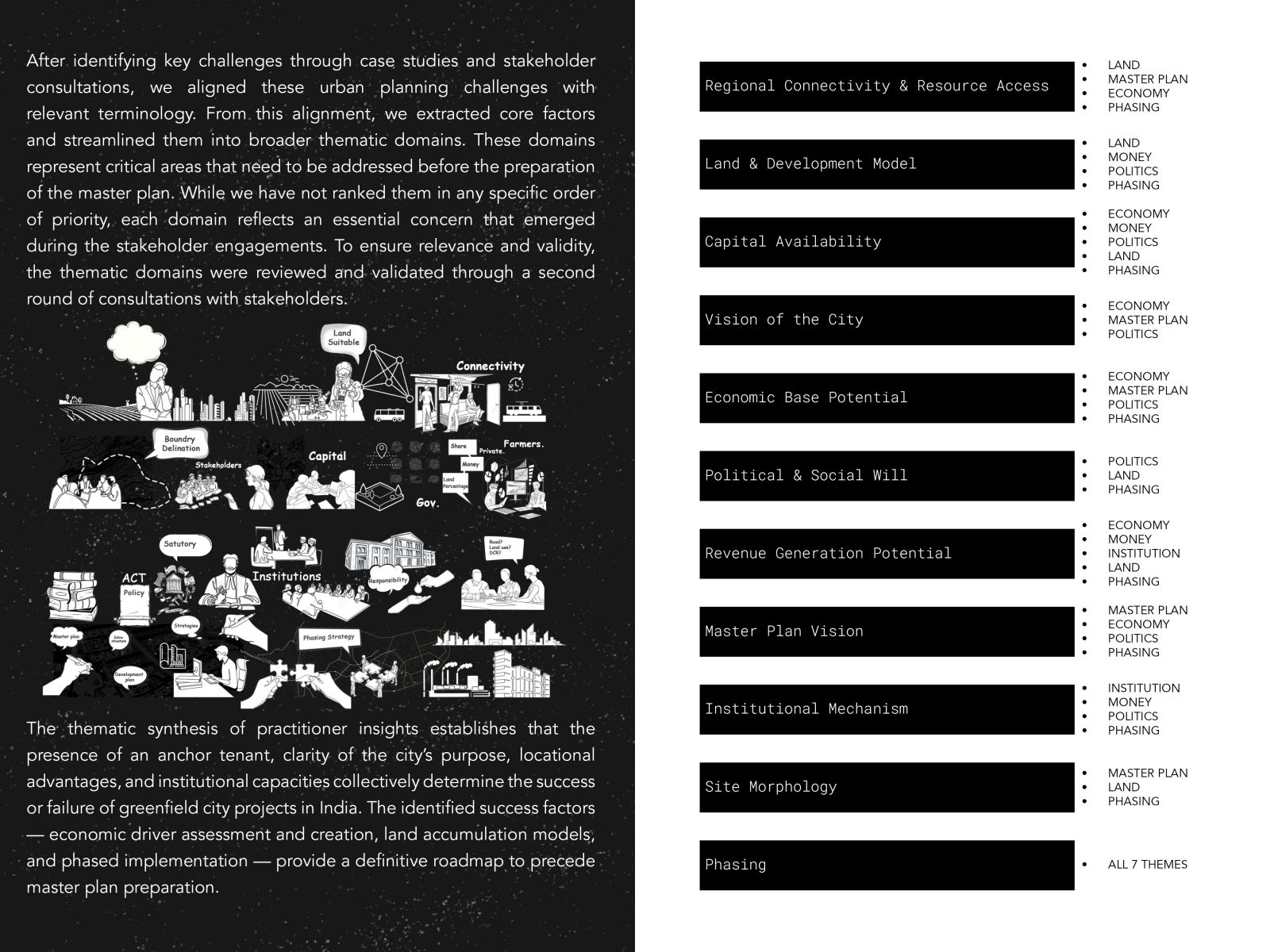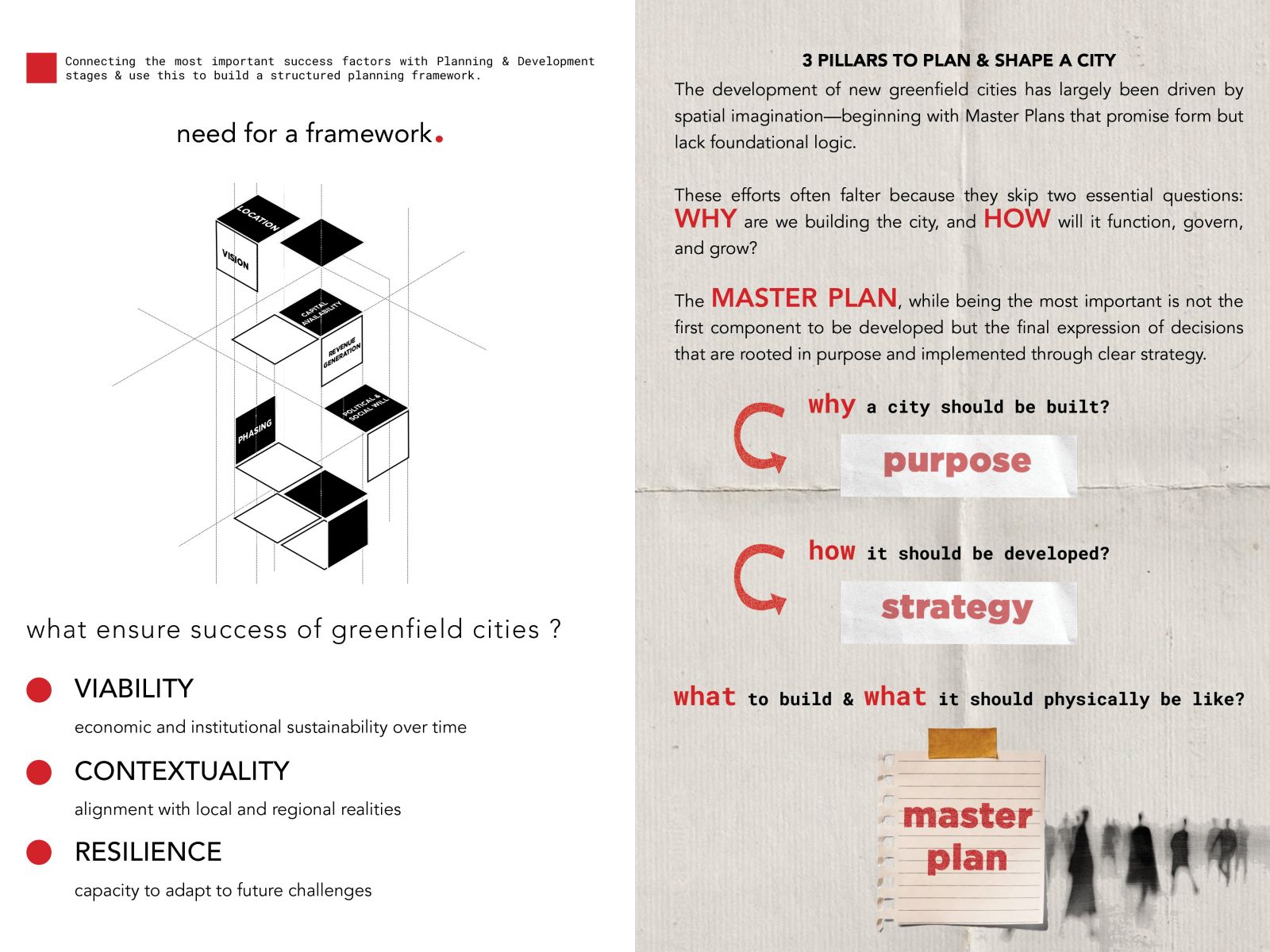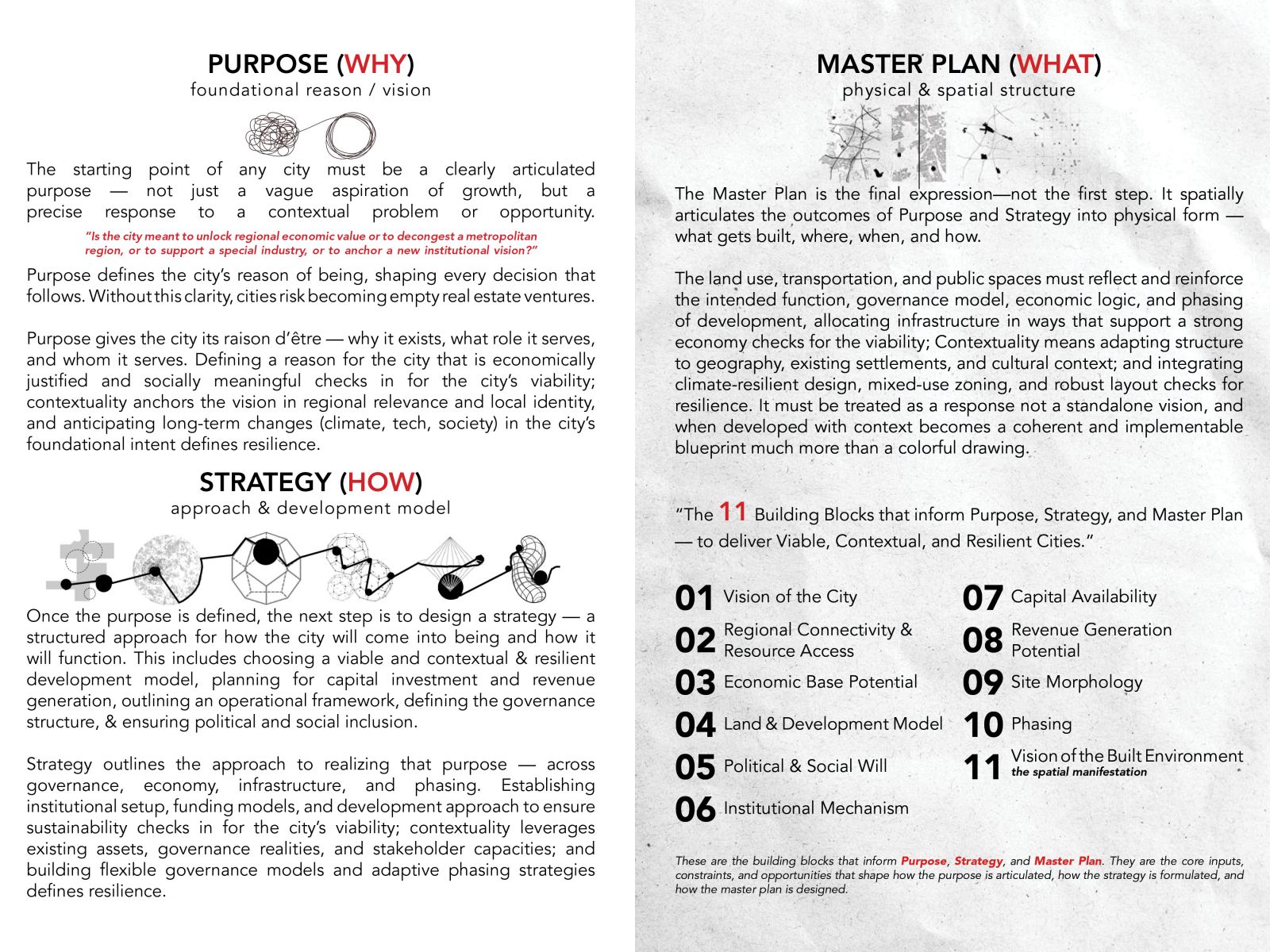Your browser is out-of-date!
For a richer surfing experience on our website, please update your browser. Update my browser now!
For a richer surfing experience on our website, please update your browser. Update my browser now!
This study developed a practice-informed framework for planning new greenfield cities in India that are viable, context-specific and resilient. Moving beyond the conventional focus on physical Master Plans, the research emphasized the critical alignment of Purpose (the Why), Strategy (the How) and the Master Plan (the What), directing stakeholders and decision-makers to begin with vision and context, adopt resilient development models, and treat spatial planning as the final expression of city-making. The framework emerged from a practice-based methodology involving four stages: identification of ongoing and upcoming greenfield city projects in India and their distinct attributes through secondary sources; analysis of challenges and success factors via case studies and consultations with professionals and consultants; documentation of lessons learnt and critical stages from real-world project engagements over the past twenty years; and synthesis of the most important success factors into a structured, step-by-step planning process. By integrating these insights, the framework guides planners, governments and developers in conceiving, planning and implementing greenfield cities that are attractive to people and investment, responsive to local geography, climate and resources, and adaptable to future challenges. The resulting approach offers a strategic roadmap to enhance the long-term viability of new greenfield city projects in India.

